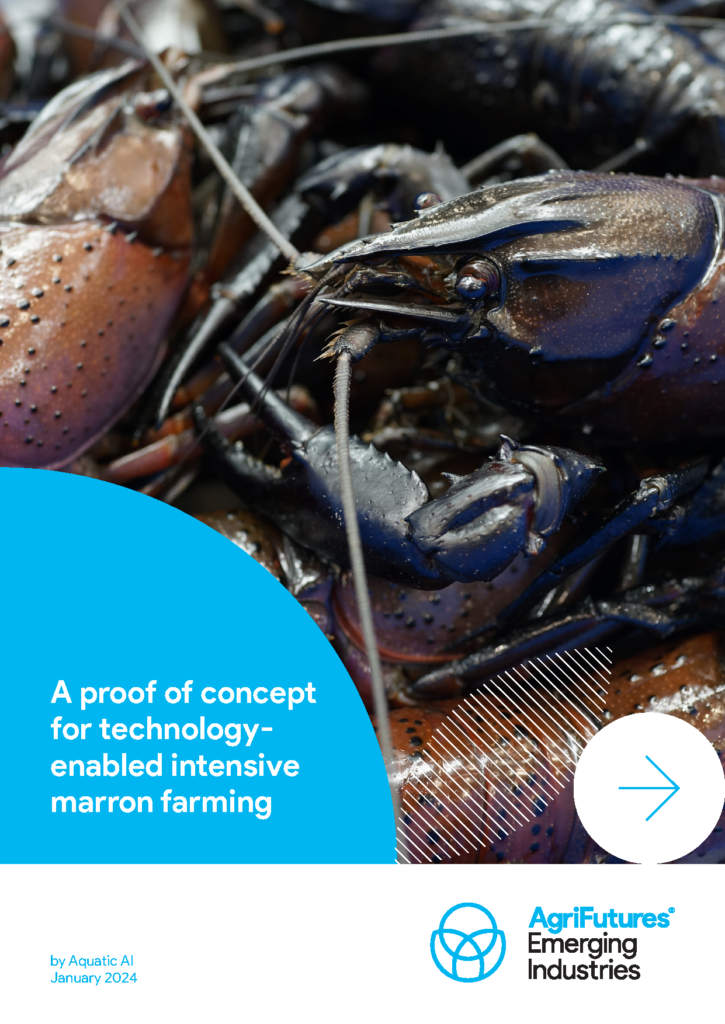Marron (Cherax cainii) is a large Western Australian freshwater crayfish that is acclaimed as a luxury ingredient by chefs and restauranteurs. Marron farming has considerable potential to grow from its current annual gross value of production of $2 million to satisfy high-value export volume opportunities. However, although substantial efforts have been made over the years to develop commercially viable production systems, there are significant barriers to scaling up output.
This project took a technology-enabled approach to addressing production barriers and therefore intensifying and scaling up marron farming systems. The project identified and validated promising feed and husbandry strategies to support healthy marron growth and survival rates at higher stocking densities. It demonstrated the potential viability of a feed regime, supported by water management scheduling and biofilm-friendly surface areas in tanks.
Gut microbiome analysis was tested as a marker for marron health, but results showed it was not a satisfactory commercially viable biomarker. The breeding simulations conducted during the project demonstrated substantial compounding genetic gain in traits such as growth, survival and feed efficiency, and predicted better future performance through generational improvements.
The project established a proof of concept for a super-intensive farming approach in a laboratory setting with full-time technical support. Further research and development will be required to implement the system at a commercial scale and will entail engineering to deploy an automated, modular, scalable approach.





